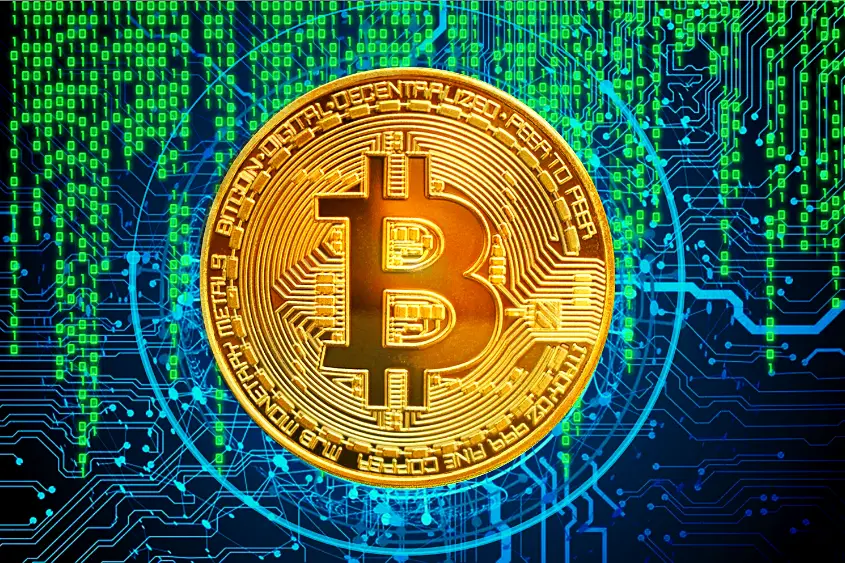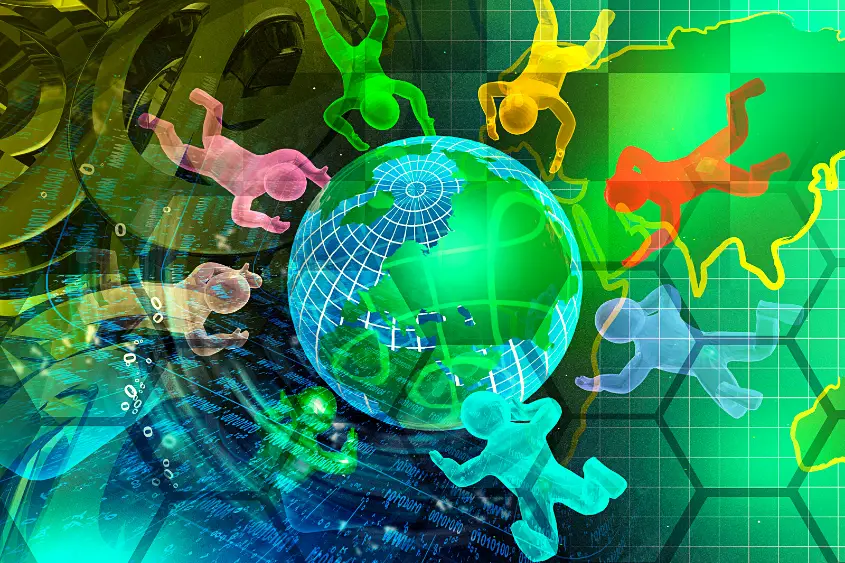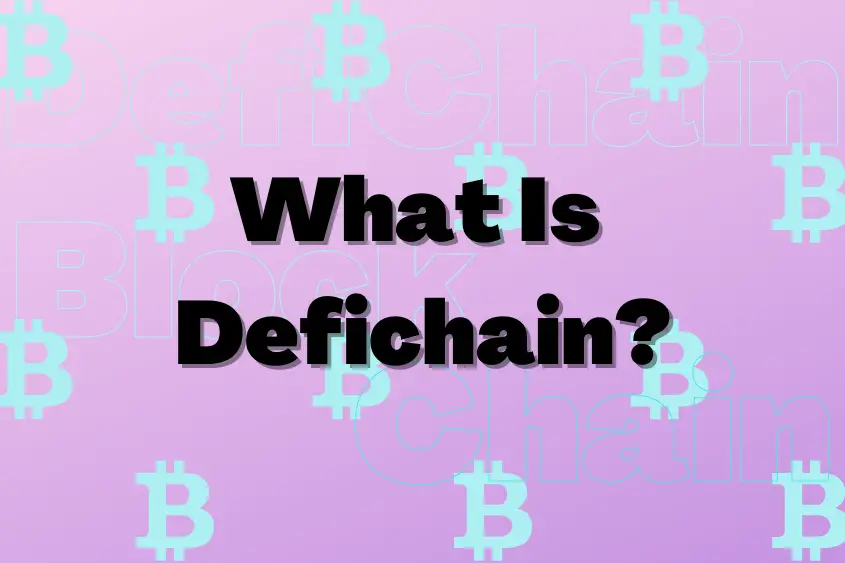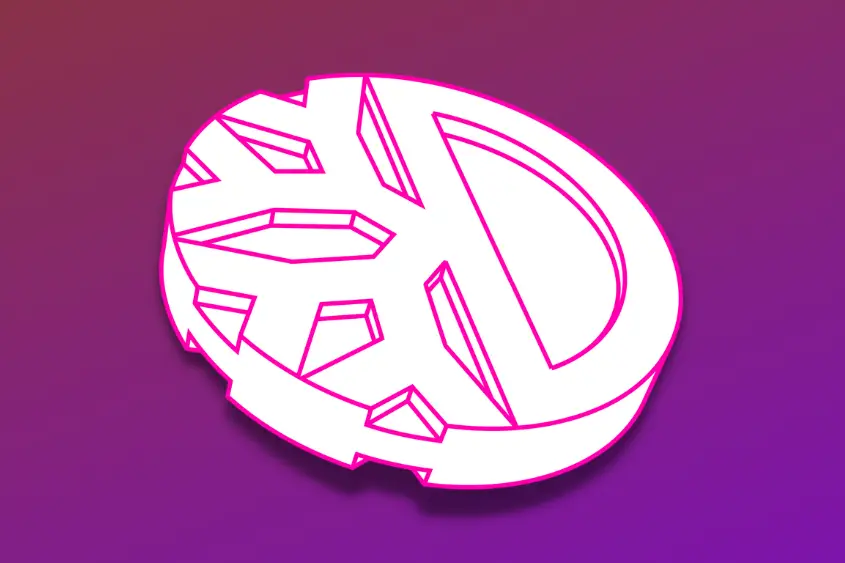As the decentralized finance sector continues to grow, so does the need for a secure and energy-efficient network that can handle such desires. That’s exactly what DeFiChain has to offer.
If you’re considering whether or not to build your next dApp on the DeFiChain blockchain, this article is for you. Below are 4 reasons why you might want to consider using the network for your next dApp endeavors.
DeFiChain Retains The Bitcoin Network’s Security
Bitcoin is regarded as one of the most secure blockchains in Web3. That’s why DeFiChain developers have merged the best of Proof-of-Stake, with the security and immutability of Bitcoin. The result is a blockchain that saves its most recent Merkle tree to the Bitcoin network every few minutes.
 smart contract capabilities, DeFiChain retains its own proof-of-stake consensus mechanism.” class=”wp-image-4687″/>
smart contract capabilities, DeFiChain retains its own proof-of-stake consensus mechanism.” class=”wp-image-4687″/>With that, the network will always benefit from Bitcoin’s immutable records. Also, leveraging Bitcoin’s security is a sure way to keep DeFiChain safe from attacks, hackers, and other vulnerabilities.
It’s important to note that since Bitcoin lacks smart contract capabilities, DeFiChain retains its own proof-of-stake consensus mechanism. Additionally, proof-of-stake allows for increased scalability, less energy consumption, quick transactions, and multi-token support, in addition to numerous other benefits outlined in the DeFiChain whitepaper.
A Carbon-Neutral Network
Since Bitcoin uses a very inefficient proof-of-work mechanism, it’s far from ideal for building a carbon-neutral blockchain. DeFiChain on the other hand has already achieved carbon neutrality thanks to its proof-of-stake mechanism—which is much more energy-efficient than Bitcoin.
DeFiChain’s carbon-neutrality proves that decentralized finance on Bitcoin can be carbon neutral, whereas other popular networks continue to impact the environment negatively.
Community-Owned And Community-Driven
Unlike many blockchains that rely heavily on their core developers to retain a degree of control over the network to make improvements and adjustments, DeFichain is entirely community-owned.

That means every single user is responsible for maintaining the network and thinking of new ways to make it better. To do this, all DeFiChain community members utilize the DeFiChain Improvement Proposals (DFIPs).
This extreme level of decentralization is a prime example of how blockchains are intended to function. Moreover, this type of community engagement encourages members to partake in discussions that can take the DeFiChain ecosystem to the next level.
The DeFiChain Accelerator
DeFiChain’s Accelerator serves as a function to increase the adoption rate of DeFiChain and DeFi on Bitcoin, with the ultimate goal of becoming the default decentralized finance blockchain. Basically, the Accelerator helps developers jumpstart their business in the DeFiChain network and extend financial support wherever they deem necessary.
As of now, the main focus for the Accelerator is the US market as it continues to build momentum even through down-market conditions. And though the market is down, global interest in DeFi, on Bitcoin specifically, is continuously rising.
What Is the DeFiChain Blockchain?
DeFiChain is a decentralized blockchain that’s trying to bring full DeFi capabilities to the Bitcoin ecosystem. By leveraging Bitcoin’s immutability and its own proof-of-stake mechanism, DeFiChain aims to enable fast, intelligent, carbon-neutral, and transparent decentralized financial services.

In 2019, the team identified some of the core challenges to bringing DeFi mainstream including:
- Popular blockchains like Ethereum require a large amount of coding to provide financial services, increasing the risk of malicious intent or bugs in the code.
- There are numerous issues with scaling on many of the popular networks
- Most blockchain governance concepts are immature and show evidence of partisanship, centralization, and ambiguity.
- Because DeFi is centered on a few platforms, the space is missing out on a significant portion of the crypto industry. The following solutions were proposed to the problems:
- Create a blockchain dedicated to DeFi use cases.
- For optimal security, build on top of Bitcoin and anchor to the Bitcoin blockchain.
- All major crypto assets are supported.
As a result, DeFiChain has become a robust ecosystem, offering some of the most secure and efficient DeFi services today.
The DeFiChain network including its native token $DFI is built on top of Bitcoin, via a fork. $DFI was never sold as an initial coin offering (ICO), rather it was distributed via Staking. This means that the price of $DFI has never been set by DeFiChain as a company, the price is simply the result of organic supply and demand.
Furthermore, DeFiChain’s mainnet has been live since the day of the Bitcoin halving in May 2020 and has been operating with minimal issues ever since. Also, being that DeFiChain is a non-Turing-complete blockchain, it is less prone to smart contract errors.
I won’t mention the multitude of projects that have suffered due to bugs in their smart contracts, but let’s just say that having a secure smart contract is crucial, especially for any financial transactions.
Ultimately, DeFiChain combines Bitcoin’s high security and hash power with its own proof-of-stake mechanism, making the network fast and inexpensive.
What Is the $DFI Token?
$DFI Token is the native unit of account for the DeFiChain blockchain. It’s used as payment for transaction fees and as a governance tool (enables token holders to vote on network improvements). Moreover, $DFI can be used as collateral to borrow other crypto assets

$DFI is generally utilized as a transaction charge (adding to liquidity pools, performing swaps on DEX) and for chain governance and voting on improvement requests. It’s also used to produce new tokens on DeFiChain for a cost of 100 DFI, any user can create new tokens.
Furthermore, $DFI is used to pay fees for all transactions and smart contracts on the DeFiChain, including fees for decentralized exchange transactions, token transfers, DeFi activities, DEX fees, ICX fees (cross-chain transfer fees), lending loan interest payment, and fees for future DeFi transactions such as futures and options.
Below are additional token requirements for achieving the stated tasks.
- 20,000 $DFI is required to run a staking node for DeFiChain.
- 100 $DFI is required to create a DCT (DeFi Custom Token). This is refundable upon the destruction of the DCT.
- 10 $DFI is required for Community Fund Proposal.
- 50 $DFI is required for Vote of Confidence.
Additional Benefits of Defichain for dApps
- Lending – You can easily borrow and lend through collateralized systems.
- Exchanges – Easily trade directly from peer-to-peer with the need for intermediaries.
- Asset tokenization – Tokenize both digital and physical goods such as equity, real estate, and other assets.
- Token wrapping – Thanks to the wrapping capabilities of Defichain, you can work with a number of digital assets directly on-chain.
- Transferable debts and receivables – Track every aspect of your transactions with complete transparency.
- Distribution of dividends – Distribution of dividends is easier than ever thanks to automatic smart contract payouts.
- Pricing oralce – Gather other chain’s data and non-crypto markets all in one place.
- Non-collateralized debt – Unlike traditional loans, credit checks aren’t necessary to borrow crypto. Rather, loans are based on your reputation and verifiable credentials.
Ultimately, Defichain is one of the most secure blockchains’s in the world since it leverages the security and immutability of Bitcoin. And thanks to its own proof-of-stake consensus mechanism, it’s 100 percent carbon neutral and more scalable than Bitcoin, making it the perfect blockchain to build your next dApp.
